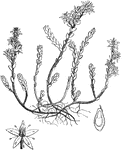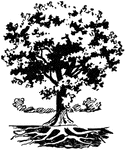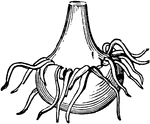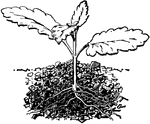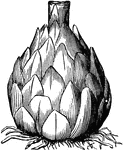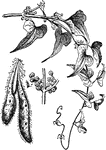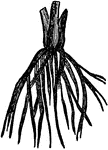
Fibrous Root
"This variety consists of numerous fibers proceeding from the neck of the plant, and may be seen in…

Napiform Root
"The variety which is very large at the base, but tapers abruptly, as in the Turnip."—Darby, 1855
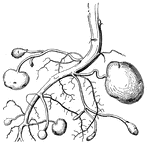
Potato Root
This shows real roots of the potato, as well as several branches of the stem, with potatoes forming…

Radish Root
So the biennial root becomes large and heavy, being a storehouse of nourishing matter, (Gray, 1858).

Rhizoma Root
"The Rhizoma or Rootstock grows in a nearly horizontal direction, emitting roots from its under side,…

Solomon's Seal Root
In some perennial herbs, prostrate stems or branches underground are thickened with this store of nourishment…
Tap Root
"When the root sinks perpendicularly into the earth, and tapers regularly from the base to the apex…
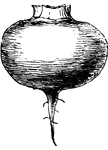
Turnip Root
Roots of the turnip are designed to absorb moisture and matter from soil, and to hold nutrients for…
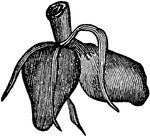
Didymous Roots
"Didymous roots are those which produce a tubercle each year, and when the tubercle of one year arrives…
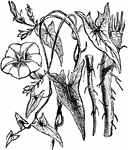
Scammony
The scammony (Convolvulus scammonia) is a flowering plant of the bindweed family. R, the root.

Seneca Snakeroot - Roots and Base of the Stem
"Polygala senega of eastern North America. It sends up several stems from hard knotty root-stocks, bearing…

Solomon's Seal
Rootstock of Solomon's Seal, with the bottom of the stalk of the season, and the bud for the next year's…
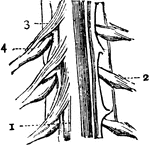
Spinal Cord
Portion of the spinal cord. 1: Body of cord; 2: A spinal nerve from left side of cord; 3: Anterior roots…

Strawberry Flagellum
"In botany, a runner; a weak, creeping shoot sent out from the bottom of the stem, and rooting and forming…

Sweet Potato
A member of the morning glory family, it is an edible root. Grown and eten because of its sweetness.…
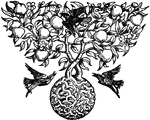
Fruit Tree
This is a fruit tree drawing, possibly and apple tree. Its roots are shown in the shape of a ball and…
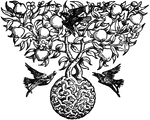
Fruit Tree
This is a fruit tree drawing, possibly and apple tree. Its roots are shown in the shape of a ball and…
White Lily
A ground leaf of White Lily, its base (cut across) thickened into a bulb-scale. This plainly shows that…
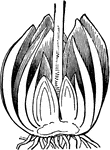
Wild Lily Cross-Section
Wild Lily divided lengthwise, showing two forming buds of the next generation.



